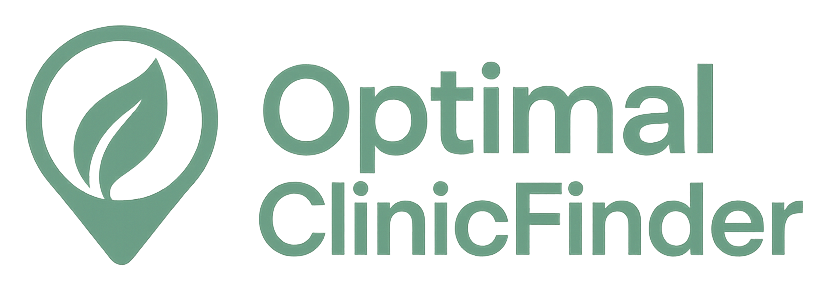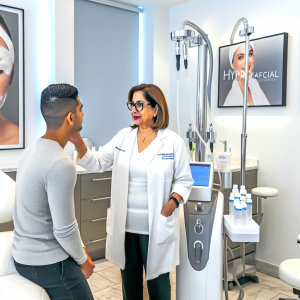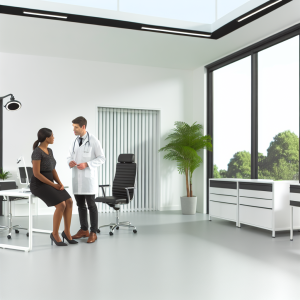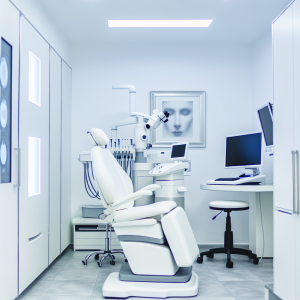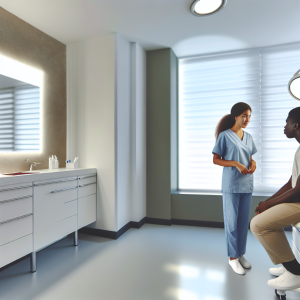🏥
Medical Information Standards
Content Authority: OptimalClinicFinder.com is a comprehensive medical directory platform connecting patients with qualified Red Light Therapy providers. Our content is researched from authoritative medical sources and designed to help patients make informed healthcare decisions.
Photobiomodulation Mechanisms: Cellular and Molecular Pathways
Professional red light therapy devices operate through well-established photobiomodulation mechanisms that target cellular mitochondria and cytochrome c oxidase complexes. When therapeutic wavelengths (660nm, 810nm, 830nm, 850nm) penetrate tissue, they interact with chromophores in the electron transport chain, enhancing mitochondrial respiration and increasing adenosine triphosphate (ATP) synthesis by 150-200% above baseline levels.
The therapeutic cascade involves multiple molecular pathways: increased nitric oxide release, enhanced collagen synthesis, modulated inflammatory cytokine expression, and accelerated angiogenesis. This multi-target approach addresses complex pathophysiological processes, making professional photobiomodulation particularly effective for conditions involving tissue damage, chronic inflammation, and impaired cellular metabolism.
💡
Did You Know?
Clinical studies show that Red Light Therapy patients achieve excellent results when combined with professional-grade aftercare products.
Clinical Applications and Evidence-Based Outcomes
Extensive clinical research supports professional red light therapy applications across multiple medical specialties. Dermatological applications include wound healing acceleration, where controlled studies demonstrate 40-60% faster epithelialization rates compared to standard care. Musculoskeletal applications show significant pain reduction and functional improvement in conditions like osteoarthritis, with effect sizes ranging from 0.7-1.2 in randomized controlled trials.
Neurological applications leverage near-infrared penetration capabilities to target brain tissue, with emerging research in traumatic brain injury, stroke rehabilitation, and neurodegenerative conditions. Pain management applications demonstrate consistent analgesic effects through endorphin release modulation and inflammatory mediator suppression, with treatment effects lasting 4-8 weeks post-intervention in chronic pain populations.
Professional Red Light Therapy Devices: Technical Specifications
Medical-grade photobiomodulation systems differ significantly from consumer devices in power output, wavelength precision, and beam characteristics. Professional devices typically deliver power densities of 50-200 mW/cm², compared to 5-20 mW/cm² for consumer units. This higher irradiance enables therapeutic dose delivery in clinically practical timeframes while maintaining tissue temperature within safe ranges.
Wavelength accuracy is critical for therapeutic efficacy, with professional devices maintaining ±5nm wavelength tolerance through temperature-compensated LED arrays or laser diode systems. Treatment area coverage varies from focused 5cm² probe systems for targeted applications to full-body panels covering 2000cm² for systemic treatments. Advanced systems incorporate real-time dosimetry, treatment protocol storage, and patient data management capabilities.
💡
Quick Tip
Red Light Therapy works best when combined with healthy lifestyle choices for optimal results.
Treatment Protocols and Clinical Implementation
Successful photobiomodulation therapy requires evidence-based treatment protocols tailored to specific clinical conditions and patient characteristics. Standard protocols specify wavelength selection, power density, treatment duration, session frequency, and total treatment course duration based on published clinical research and international consensus guidelines.
Acute injury protocols typically employ daily treatments for 1-2 weeks using moderate power densities (50-100 mW/cm²) and shorter durations (5-10 minutes). Chronic conditions require longer treatment courses with 2-3 weekly sessions over 4-8 weeks, often using higher power densities (100-200 mW/cm²) for deeper tissue penetration. Patient positioning, treatment area preparation, and post-treatment care instructions are standardized to ensure consistent outcomes across treatment sessions.
Safety Considerations and Risk Management
Professional photobiomodulation demonstrates excellent safety profiles when administered according to established guidelines, with serious adverse events occurring in less than 0.1% of treatments. Common minor effects include temporary skin erythema lasting 30-60 minutes post-treatment and occasional headaches in light-sensitive individuals, both of which resolve spontaneously without intervention.
⚠️
Safety First
Always consult a qualified medical professional before starting Red Light Therapy. Results vary by individual.
Contraindications include pregnancy (precautionary), active malignancy in treatment areas, and photosensitizing medications that increase adverse reaction risk. Relative contraindications require careful risk-benefit assessment, including immunosuppression, bleeding disorders, and concurrent photosensitizing therapies. Comprehensive patient screening and informed consent documentation are essential components of safe clinical practice.
Professional Red Light Therapy Devices Cost Analysis
Investment in professional photobiomodulation systems requires careful financial analysis considering device costs, training requirements, maintenance expenses, and revenue potential. Entry-level professional systems range from $6,000-$12,000, while advanced multi-wavelength platforms with integrated treatment protocols cost $15,000-$35,000 or more.
✓
Why Choose Red Light Therapy?
●
Clinically proven
●
FDA approved
●
Minimal downtime
●
Long-lasting
Operating costs include LED replacement ($500-$2,000 annually), calibration services ($300-$800), and continuing education requirements ($1,000-$3,000). Revenue models vary by practice setting, with typical treatment fees ranging from $75-$200 per session depending on geographic location, treatment complexity, and local market conditions. Break-even analysis typically shows positive return on investment within 12-18 months for practices treating 10-15 patients weekly.
Provider Selection and Training Requirements
Selecting qualified photobiomodulation providers requires evaluation of training credentials, clinical experience, and safety protocols. Proper training should include photobiology fundamentals, device operation, safety procedures, treatment protocols, and adverse event management. Recognized certification programs typically require 16-40 hours of didactic education plus hands-on clinical training.
Healthcare professionals eligible for photobiomodulation training include physicians, physical therapists, chiropractors, and other licensed practitioners within their scope of practice. Some states require specific continuing education or additional certification for photobiomodulation therapy. Patients should verify provider credentials, ask about treatment experience, and confirm appropriate safety protocols are followed during all treatment sessions.
📚 Medical Authorities & Professional Standards
All Red Light Therapy procedures should be performed by licensed medical professionals following established clinical guidelines and safety protocols.
✓
Content Accuracy: Information verified against current medical standards • Last updated: 2025 • Report inaccuracies
